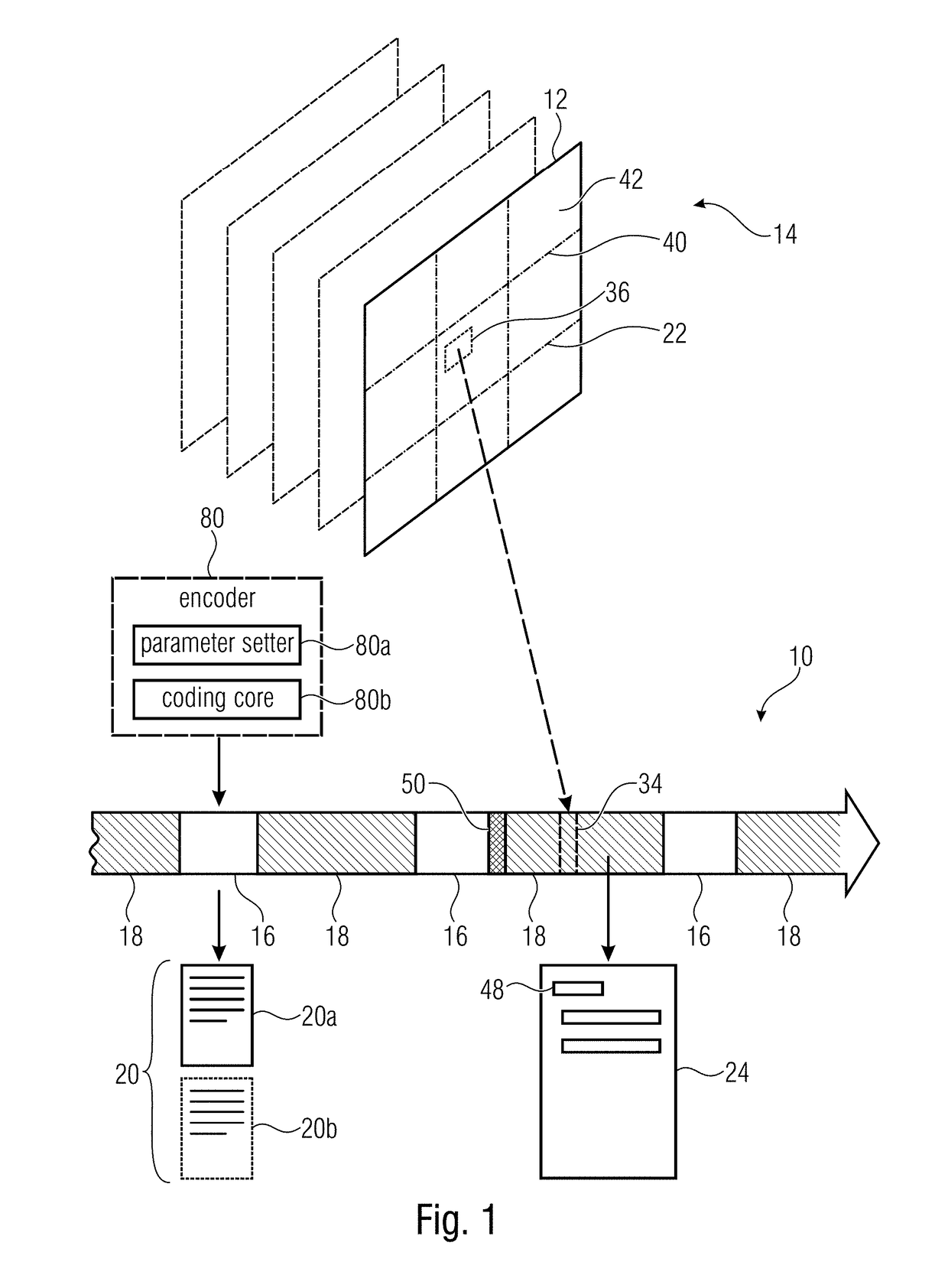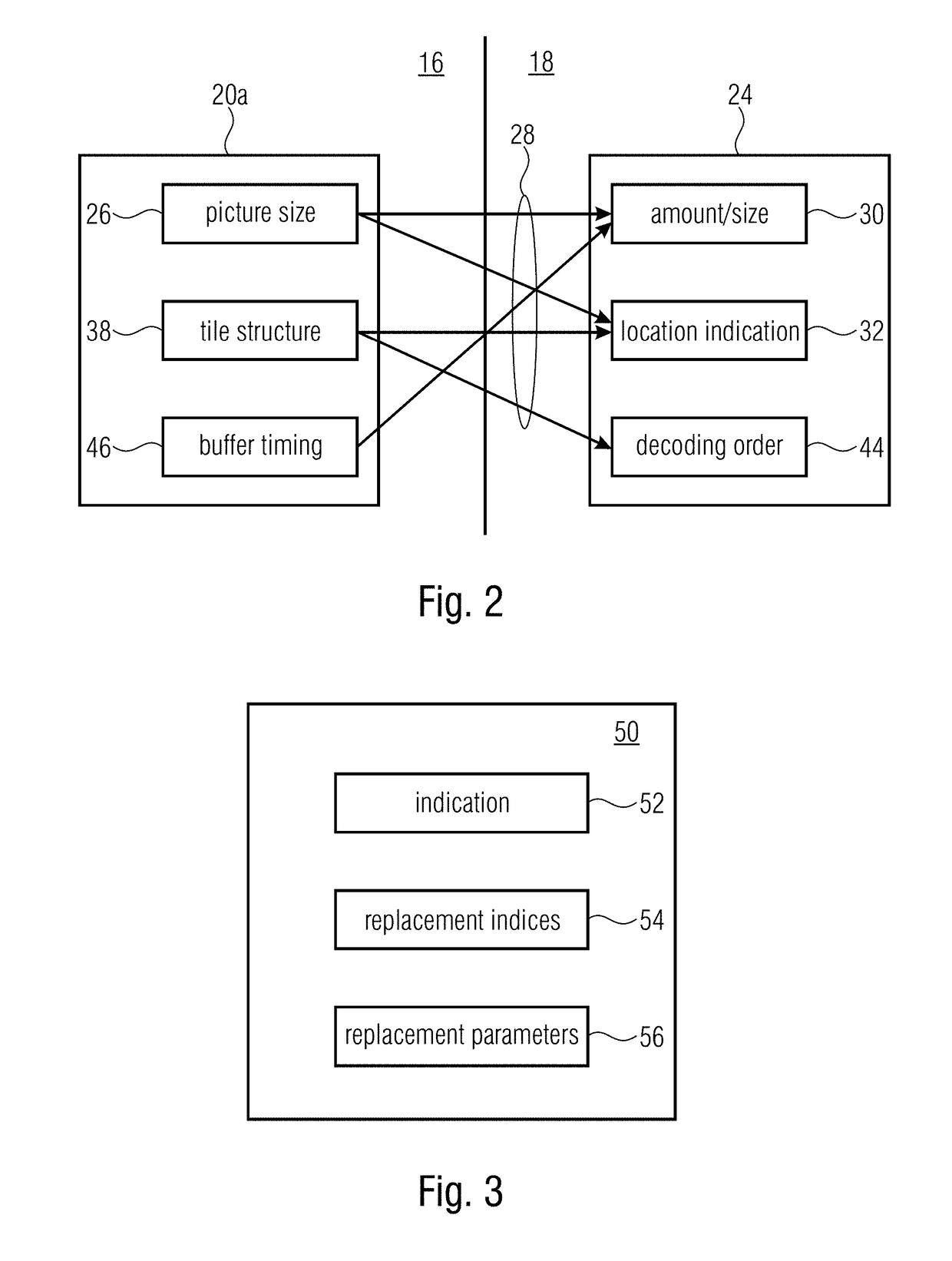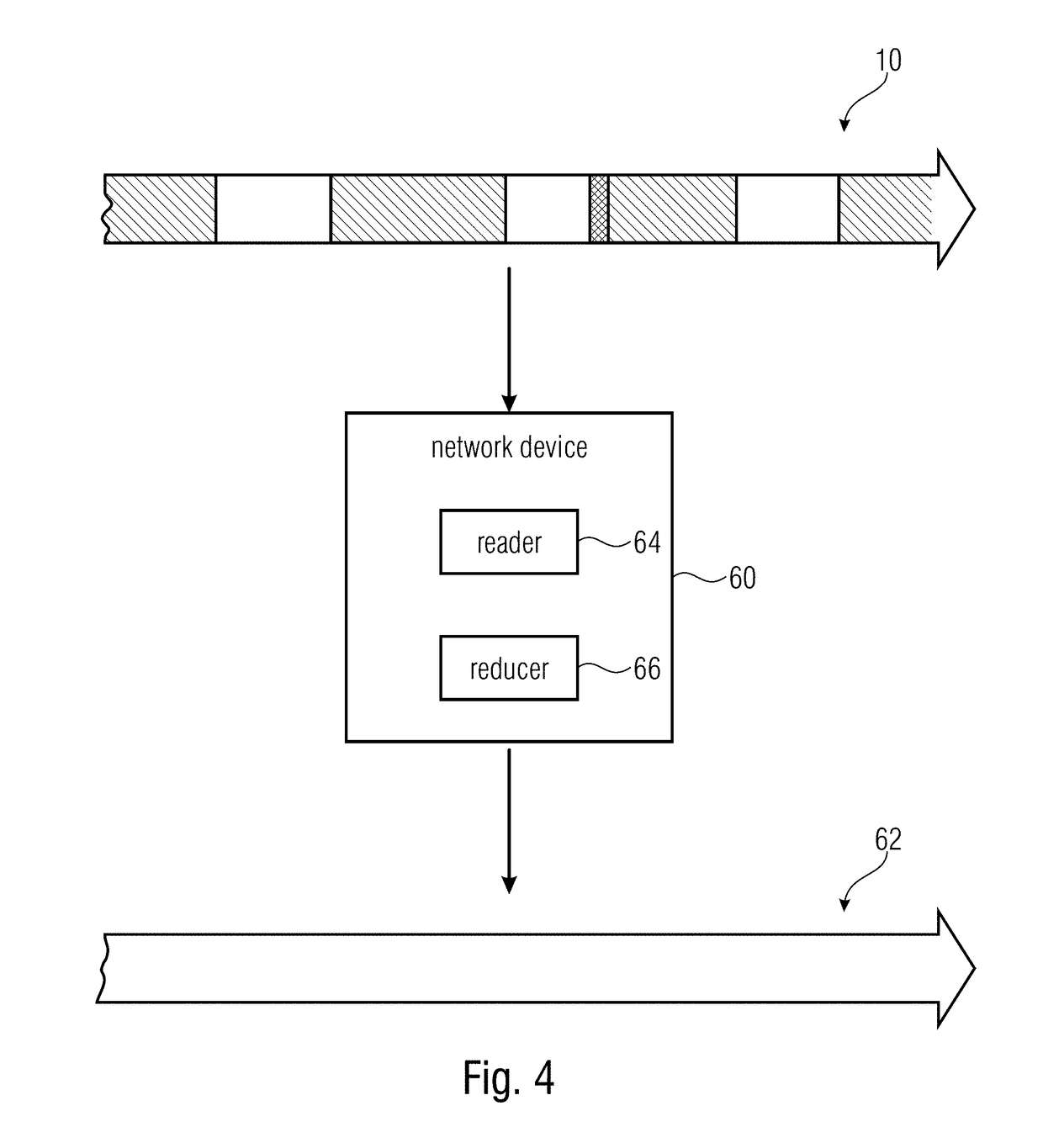Concept for picture/video data streams allowing efficient reducibility or efficient random access
a technology of random access and data stream, which is applied in the field of concept for picture/video data stream allowing efficient reducibility or efficient random access, can solve the problems of computational complexity, large bitrate peak, and inability to compute the computational non-complex scalability of scene sectioning video codec, so as to reduce the negative effect of random access point bitrate peak in the video data stream, the effect of reducing the video data stream and reducing the negative effect of random access point bitrate peak
- Summary
- Abstract
- Description
- Claims
- Application Information
AI Technical Summary
Benefits of technology
Problems solved by technology
Method used
Image
Examples
Embodiment Construction
[0048]The description of the present application is concerned with the above-identified aspects of the present application. In order to provide a background relating to a first aspect of the present application, which is concerned with subarea-extraction / reduction of video data streams, an example of an application where such a desire may stem from and the problems in fulfilling this desire are described and their overcoming motivated in the following by exemplarily referring to HEVC.
[0049]Spatial subsets, i.e. sets of tiles, can be signaled in HEVC using the Temporal Motion Constraint Tile Sets (TMCTS) SEI Message. The tile sets defined in such a message have the characteristic that “the inter prediction process is constrained such that no sample value outside each identified tile set, and no sample value at a fractional sample position that is derived using one or more sample values outside the identified tile set, is used for inter prediction of any sample within the identified t...
PUM
 Login to View More
Login to View More Abstract
Description
Claims
Application Information
 Login to View More
Login to View More - R&D
- Intellectual Property
- Life Sciences
- Materials
- Tech Scout
- Unparalleled Data Quality
- Higher Quality Content
- 60% Fewer Hallucinations
Browse by: Latest US Patents, China's latest patents, Technical Efficacy Thesaurus, Application Domain, Technology Topic, Popular Technical Reports.
© 2025 PatSnap. All rights reserved.Legal|Privacy policy|Modern Slavery Act Transparency Statement|Sitemap|About US| Contact US: help@patsnap.com



